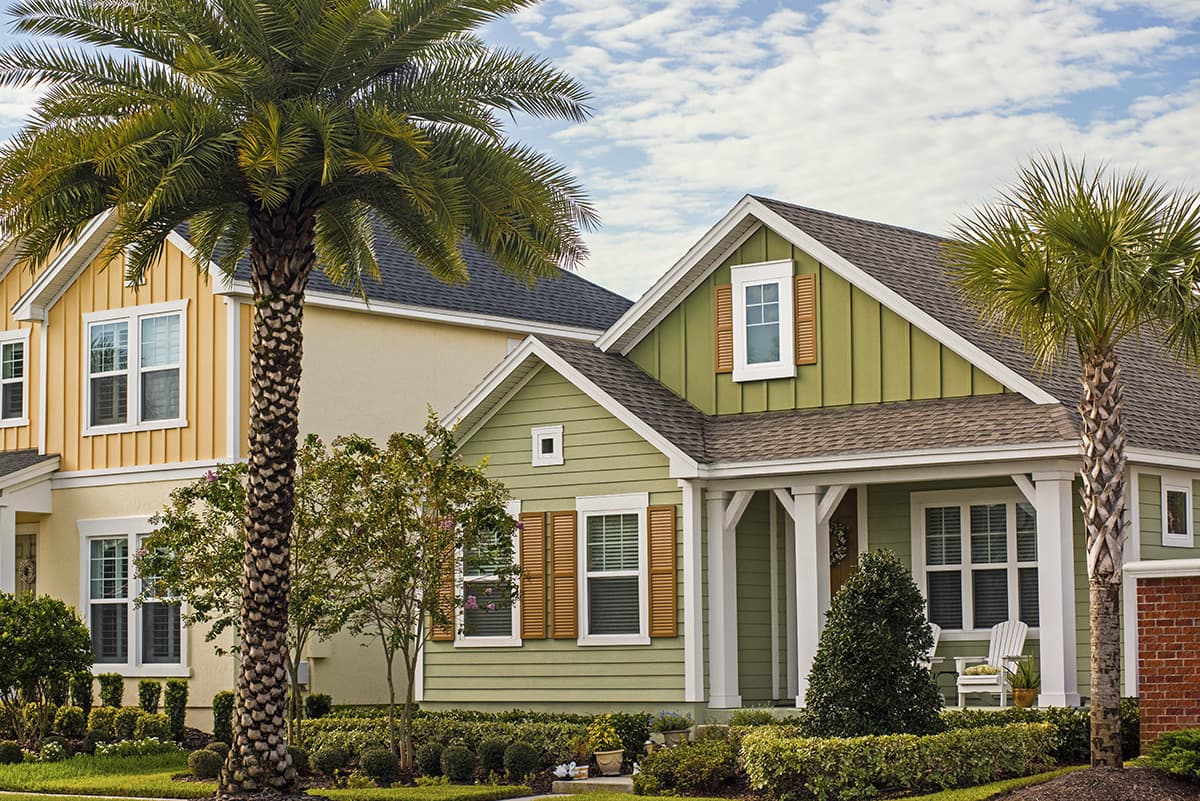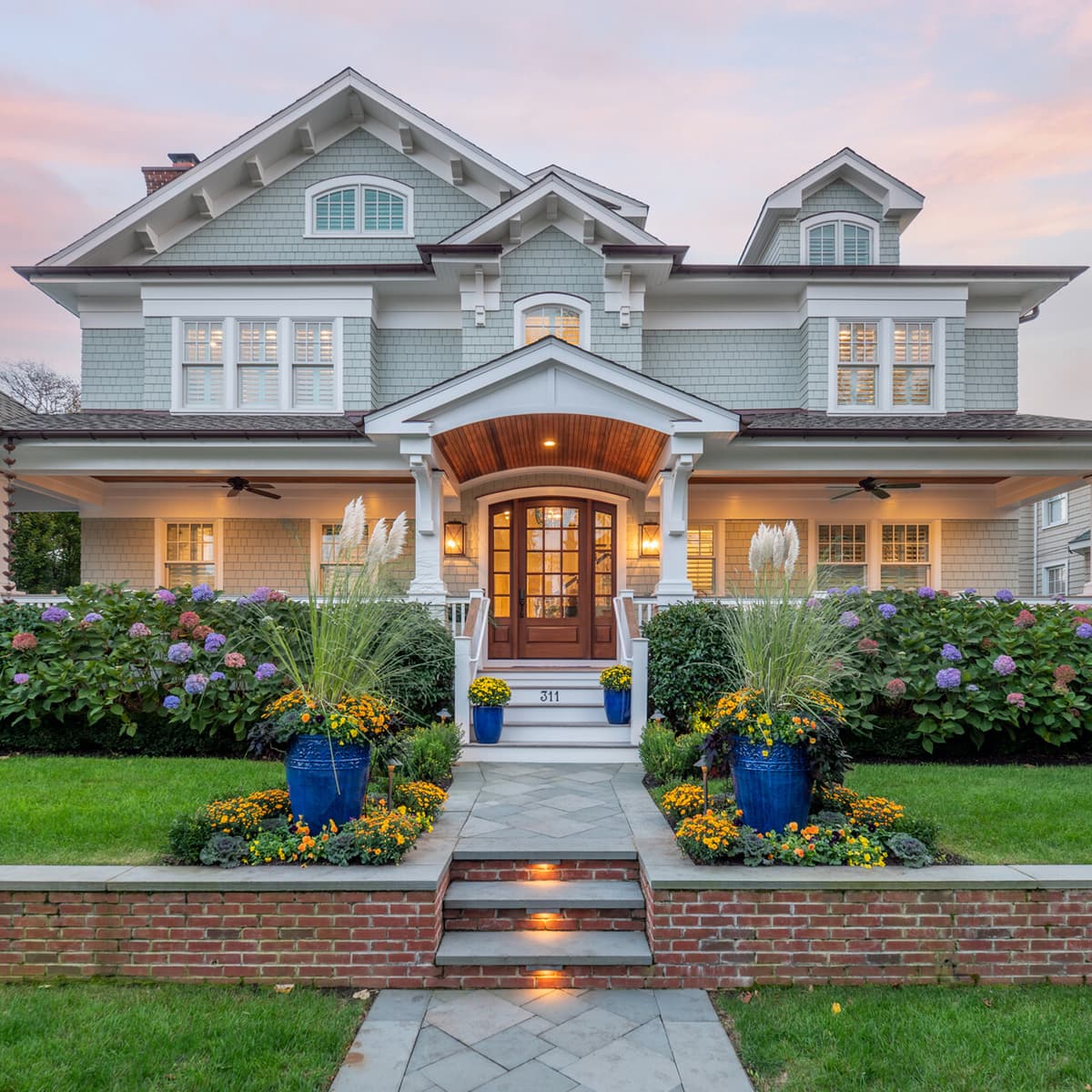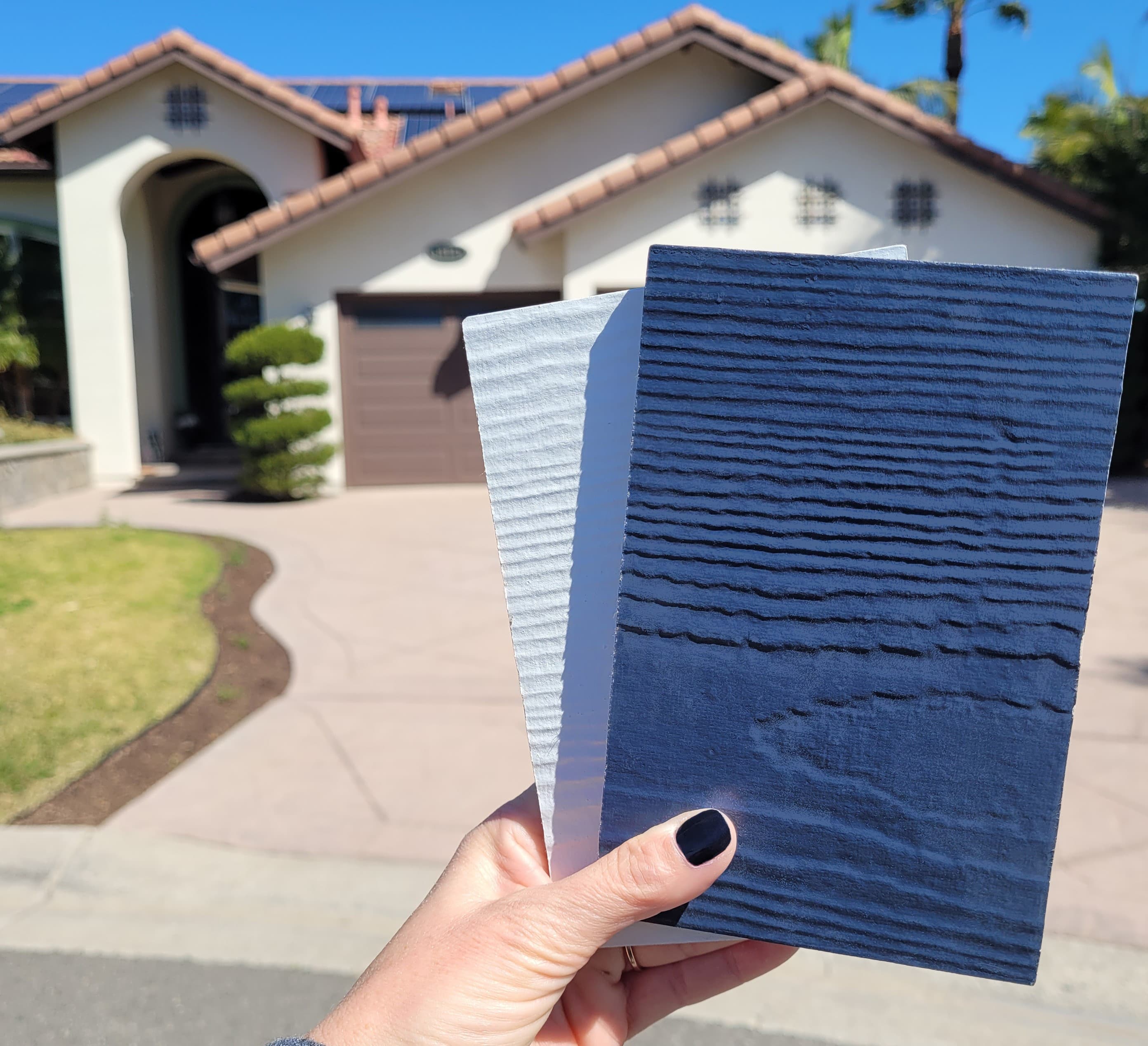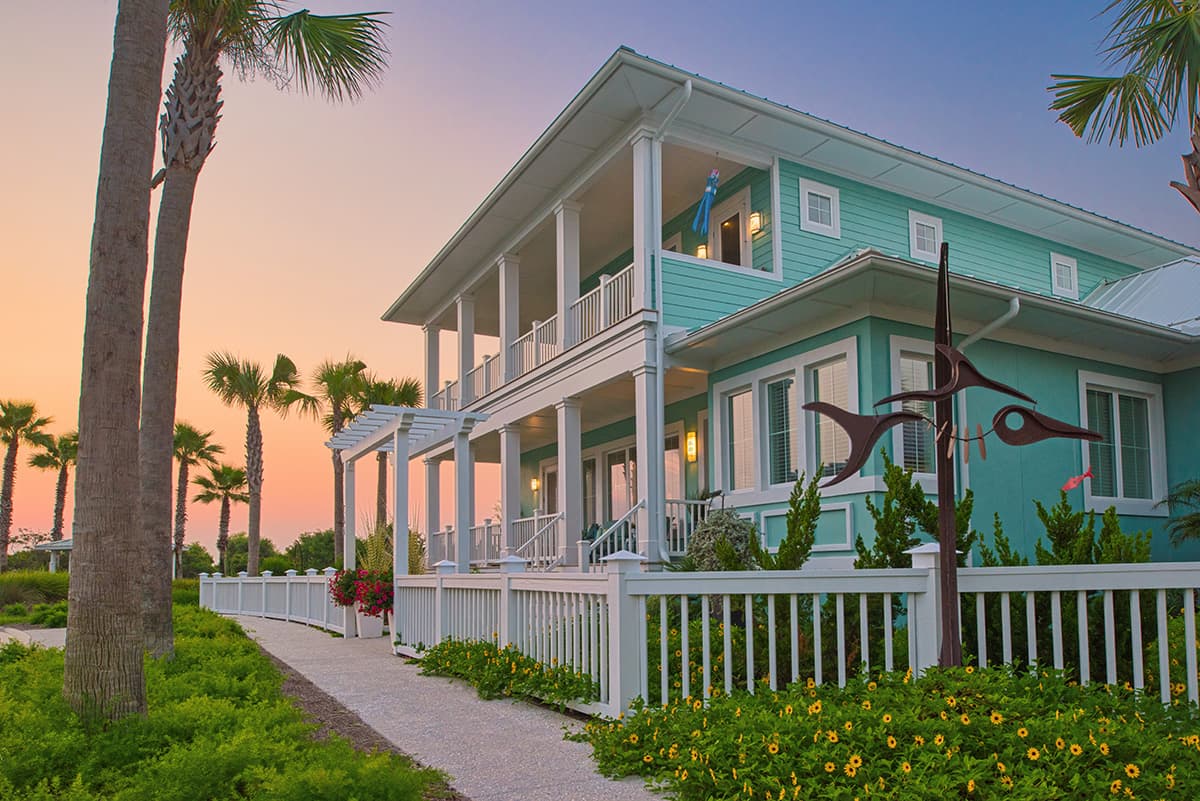How to Choose Exterior Colors For Your House
Choosing siding colors for your house can be a big decision—and one you’ll want to be happy with for years to come. Here’s what you should keep in mind as you’re making your choice.

Selecting a color for your home exterior is an opportunity to embrace creativity and have a lasting impact on the overall look of your property.
There are a handful of factors to consider when selecting a color palette for your house siding, from personal preference to inspiring trends to what already exists in your neighborhood. With a little research, you can feel confident that whatever color you choose will be perfect for your home.
Begin by looking at other homes in your neighborhood
Unless your house sits alone on a vast expanse of property, it’s important to consider how it fits in with the surrounding properties. Look at the color schemes of neighboring houses. If your home is flanked on both sides by white houses, consider choosing something different to avoid the monotony of the same color lining the entire street.
Examine your landscape
Take a look at the natural environment surrounding your home. Do you have a lot of trees and want to complement the earth tones by introducing a more vibrant shade? Or maybe you want to choose warm, neutrals that blend in with the landscape. Keep in mind that you are not just choosing a siding color; you are creating a look and feel for your entire property.

Should you choose a light or dark house siding color?
Color choice should reflect your personality and preferences. White and other light neutrals have stood the test of time and are anything but boring. White gives a very clean look to a home and reflects the light, appearing slightly different over the course of the day. But dark colors are gaining momentum for their bold look and ability to make a house pop. If you are looking for a standout exterior, consider dark gray, blue or even black siding.

Work with what cannot be changed
There are undoubtedly some elements of your home that you cannot or do not want to change along with your new siding. Ensure whatever color you choose blends with the color of your roof, garage doors and any brick or stone accents on your house. A colored brick or paver walkway will also narrow your color choices since you will want to complement what is already there.
Get a color siding sample and look at it in different lights
If you think you have settled on a color for your home, get a sample before you commit. All colors change in different lights. What you love on a sunny day might not have the same affect under cloud cover. Pay attention to undertones in the colors, whether it’s a cool or warm white, a blue that pulls gray or a gray that actually looks green in certain conditions.
Should you incorporate an accent color?
There are various reasons to choose an accent color. Perhaps you have a large home and want to break up an expanse of a single color, or you want to draw attention to gables or other architectural details. Maybe you just like the clean lines of a white home accented in black trim. Decide if you are looking for bold contrast or a gentle melding of colors, and consider the color wheel to help you find the perfect combination.

Taking into account these practical tips will ensure you choose a color scheme that you will love today and for years to come. When you are ready to get started, take a look at all of the siding colors available with ColorPlus® Technology.